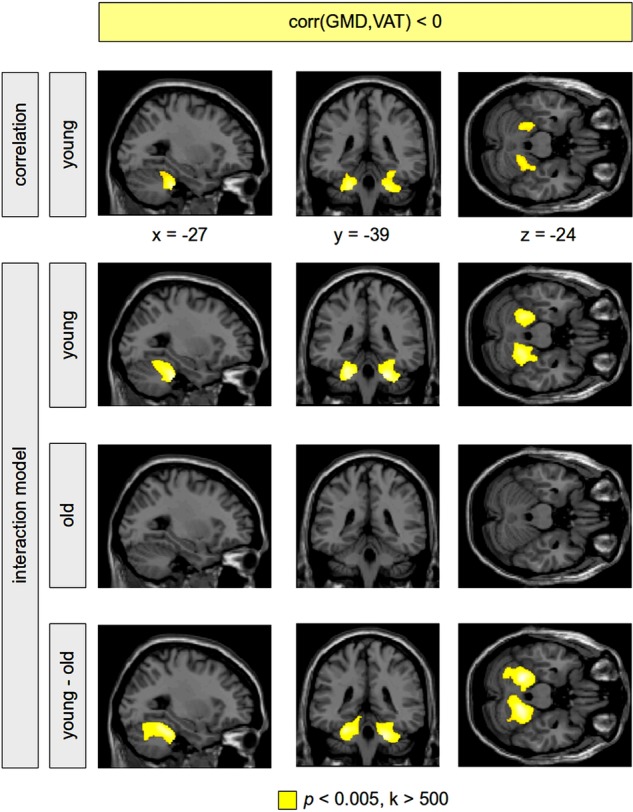Figure 1.

Negative correlation between grey matter density (GMD) and visceral adipose tissue (VAT). Analyses were performed using a correlational model including the sample of young-to-mid-age adults only (first row), and using a full factorial model including all subjects (rows 2–4). The correlation analysis within the younger subgroup showed a higher amount of VAT associated with a decrease of GMD in the cerebellum bilaterally (first row, colour-coded in yellow). Sex, age, subcutaneous adipose tissue and the total amount of grey matter volume were taken into account using additional covariates in the statistical analysis. Note that we did not find a significant positive correlation between GMD and VAT in the whole brain in the younger subgroup. Within the interaction model, the negative correlation between GMD and VAT was again present bilaterally in the cerebellum in the young-to-mid-age adults (second row); this correlation was not revealed for the older subjects (third row). The difference between both groups (the VAT–age interaction) turned out to be significant (fourth row). No significant positive correlation between GMD and VAT was found within both groups of young-to-mid-age as well as older subjects. Significant clusters are shown with a voxel threshold of p<0.005. In order to control for false positives, significant clusters are shown with a minimum cluster size of k>500. Using a family wise error corrected p<0.05, all clusters remained significant except for the cluster in the left cerebellum within the young-to-mid-age adults (first row), which was significant using the false discovery rate.
